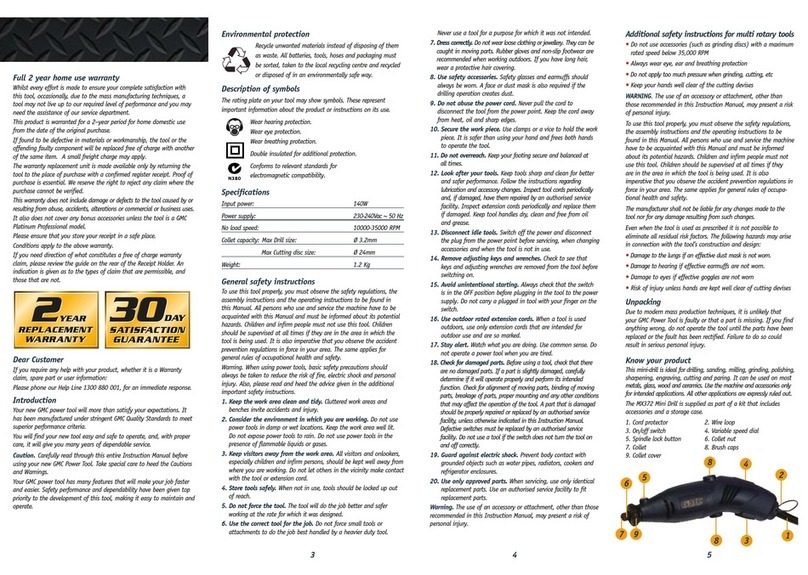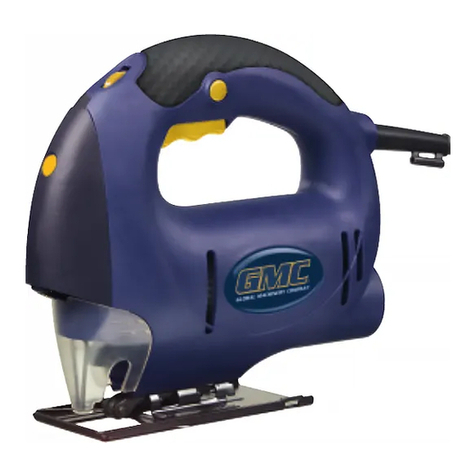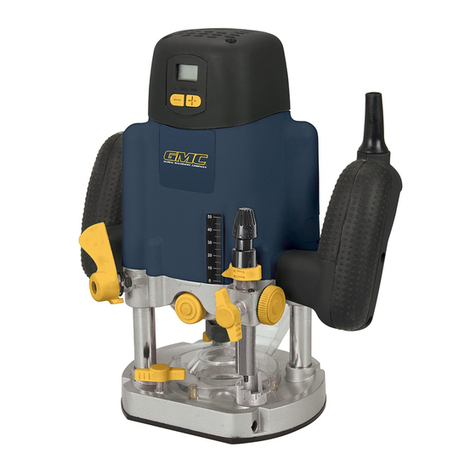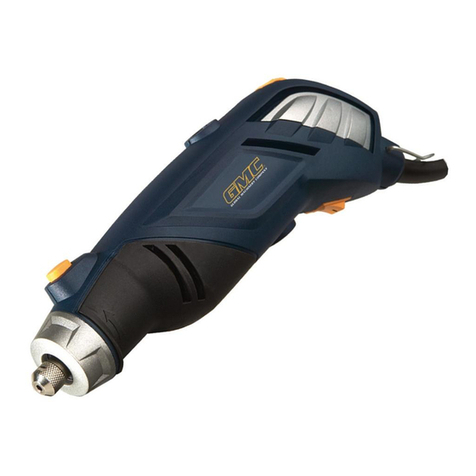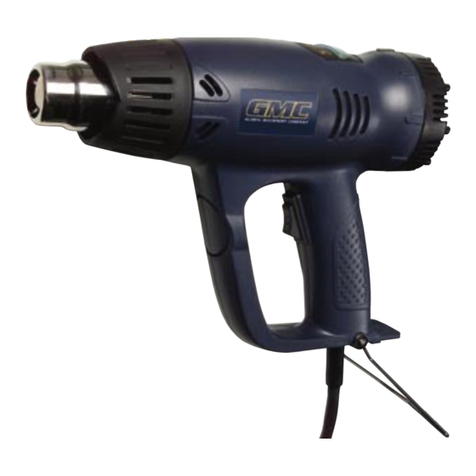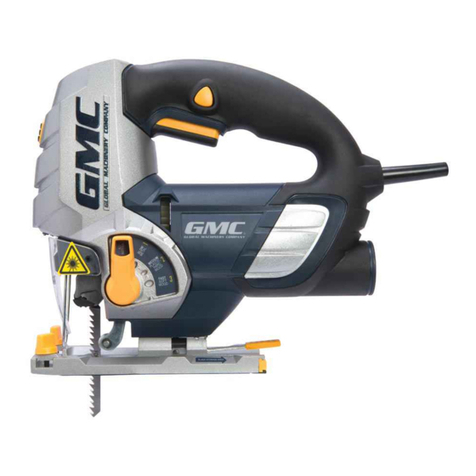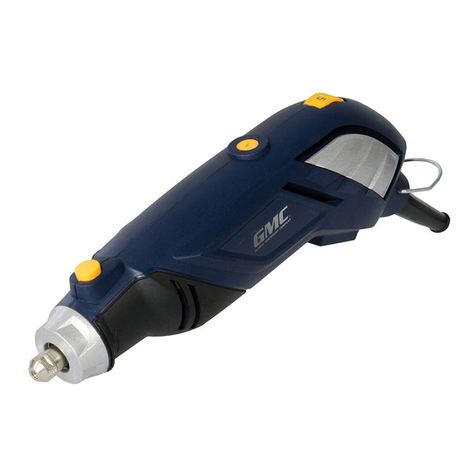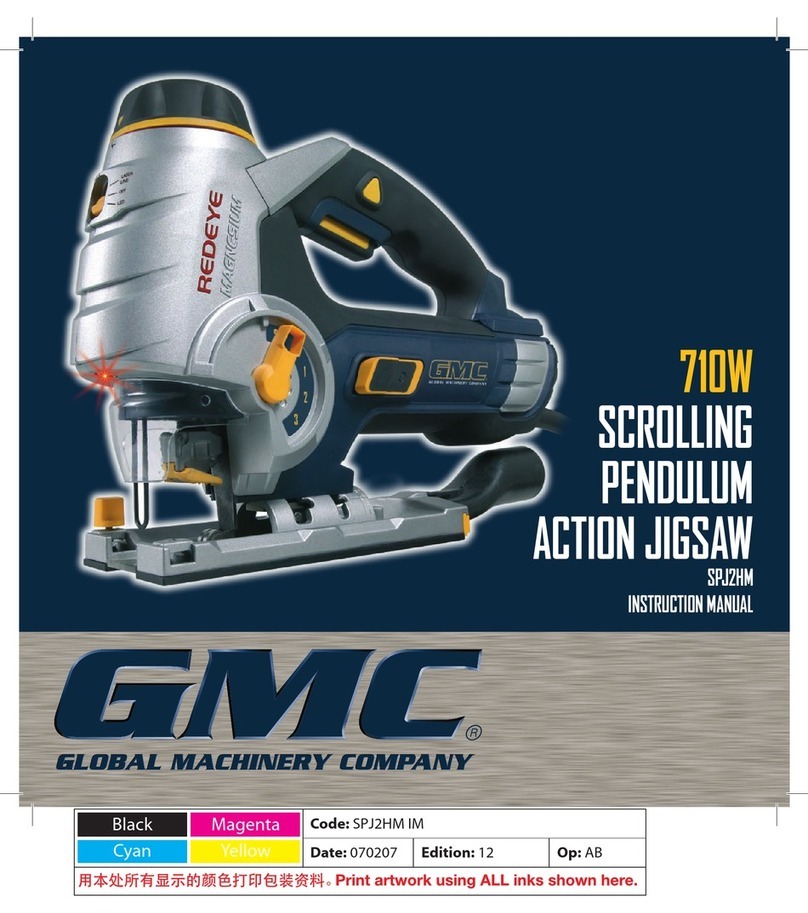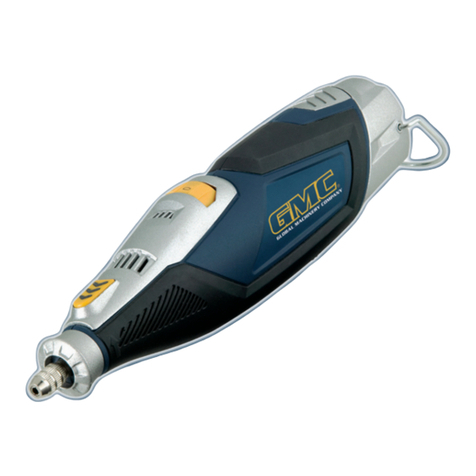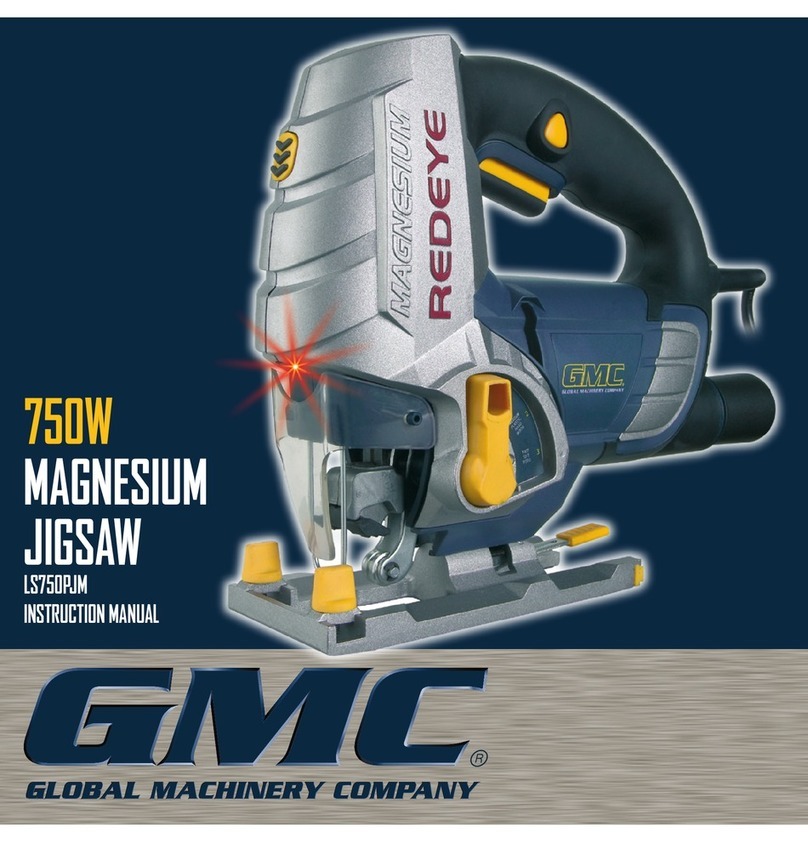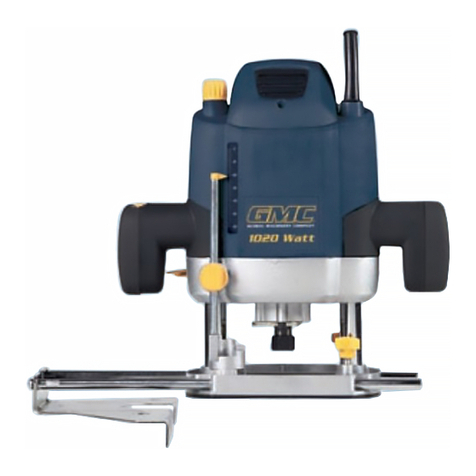5
g) If devices are provided for the connection of dust extraction and collection facilities,
ensure these are connected and properly used. Use of dust collection can reduce
dust-related hazards
Power Tool Use & Care
a) Do not force the power tool. Use the correct power tool for your application. The
correct power tool will do the job better and safer at the rate for which it was designed
b) Do not use the power tool if the switch does not turn it on and off. Any power tool that
cannot be controlled with the switch is dangerous and must be repaired
c) Disconnect the plug from the power source and/or the battery pack from the power
tool before making any adjustments, changing accessories, or storing power tools.
Such preventive safety measures reduce the risk of starting the power tool accidentally
d) Store idle power tools out of the reach of children and do not allow persons
unfamiliar with the power tool or these instructions to operate the power tool. Power
tools are dangerous in the hands of untrained users
e) Maintain power tools. Check for misalignment or binding of moving parts, breakage
of parts and any other condition that may affect the power tool’s operation. If
damaged, have the power tool repaired before use. Many accidents are caused by
poorly maintained power tools
f) Keep cutting tools sharp and clean. Properly maintained cutting tools with sharp cutting
edges are less likely to bind and are easier to control
g) Use the power tool, accessories and tool bits etc. in accordance with these
instructions, taking into account the working conditions and the work to be
performed. Use of the power tool for operations different from those intended could result
in a hazardous situation
WARNING: When used in Australia or New Zealand, it is recommended that this tool is
ALWAYS supplied via Residual Current Device (RCD) with a rated residual current of 30mA
or less.
Service
a) Have your power tool serviced by a qualied repair person using only identical
replacement parts. This will ensure that the safety of the power tool is maintained
Multi-Tool Safety
General safety advice for multi-purpose hand held cordless and corded tools including both
rotating and oscillating types.
WARNING: Contact with electric or gas lines can lead to re, electric shock and explosions.
Penetrating a water line can result in damage to property and electric shock. Use appropriate
detectors to determine if utility lines are hidden in the work area. Always be extremely careful
when making blind and pocket cuts where the exit point of the blade or accessory at the other
side of the material cannot be seen.
WARNING: Asbestos may be in materials and textured coatings in older properties and
should be treated with extreme caution. If you suspect or discover asbestos consult your local
health and safety authority immediately for advice on its removal. It may require the services
of a specialist asbestos removal company.
WARNING: If a cutting accessory makes contact with a ‘live’ wire, the exposed metal parts
of the power tool may become ‘live’ and could give the operator an electric shock. Hold the
power tool by the insulated gripping surfaces at all times during use.
WARNING: DO NOT work with damp or wet materials or accessories that require liquid
coolants. Liquids entering the body of the tool is an electrical hazard as well as likely to
destroy the tool.
WARNING: The dust produced from working with some materials can be toxic. Beech,
oak, mahogany and teak natural woods, man-made composite woods and some surface
treatments including paint with lead are toxic. Lead based paint is common in buildings
pre 1960. Always wear suitable respiratory protection for example a respirator face mask.
Ideally also use a dust extraction system or regularly vacuum the work area to prevent the
build-up of dust and do a nal vacuum after the work is completed. Most dust is a re hazard.
Overhead work surfaces have an increased safety risk for dust.
a) Wear protective, cut-proof gloves when changing blades and accessories. Some
blades and accessories can be very sharp. Scraper blades sharpen as they are used.
Blades and accessories shortly after use can be very hot, allow to cool.
b) Keep your workplace clean. Dusts created from different materials including woods
and metals can be highly ammable. Dust from light alloys including magnesium can burn
or explode easily.
c) DO NOT treat the work surface with uids containing solvents. If such uids become
warm from scraping, toxic vapours may be produced, or surfaces may catch re.
WARNING: NEVER t any blade or accessory with a maximum speed lower than the no load
speed of the power tool.
d) ONLY change accessories and blades or perform maintenance with the tool
disconnected from its power supply, either mains connection or battery. If the tool
features a captive battery in a charged state take extra care not to switch it on accidentally
when changing accessories or blades.
e) ALWAYS use accessories or blades that are approved by the manufacturer or meet
the specication of your power tool, this includes being compatible in size and
speed. DO NOT try to cut material thicker than the capacity stated in the specication.
f) ONLY use an adapter for using different accessories or blades if the adapter is
specically designed and approved by the manufacturer of your power tool.
g) DO NOT modify accessories or blades so they work with power tools they were not
intended to work with or for uses that they were never designed for.
h) DO NOT use accessories or blades that are damaged, bent, chipped, cracked,
heavily corroded or excessively worn. Such accessories can break apart in use
causing injury to the operator. ALWAYS inspect accessories or blades before use and
discard immediately if not in good condition. NEVER use blades that are worn to a dull
edge. ALWAYS use sharp blades.
i) ALWAYS ensure all accessories or blades are securely attached to the tool before
use and the securing tool is removed prior to use.
j) DO NOT attempt to free a jammed blade or accessory until the power tool has been
disconnected from power.
k) Inspect the workpiece before use to make sure it is in the correct condition for the
tted accessory or blade. Remove all nails, staples and other embedded objects prior to
starting work.
l) Any freely movable workpieces should be secured with a clamp or vice before
starting work.
m) ALWAYS ensure that the lighting is adequate in the work area. Never remove your
safety goggles or glasses to improve your view instead increase the level of lighting or
move the lighting so it specically illuminates the work area correctly.
n) DO NOT operate the power tool near ammable materials. Be especially careful when
cutting wood and metal. Sparks from metal cutting are a common cause of wood dust
res.
o) Battery chargers are for indoors use only. Ensure that the power supply and charger
are protected against moisture at all times.
p) NEVER start the power tool while the blade or accessory is in contact with the
workpiece, and always allow the power tool to reach its full speed before making
contact with the workpiece. Use the variable speed control of the tool (if tted) to start
the tool at the correct speed for the accessory or blade tted.
q) DO NOT exert additional pressure on the body of the tool: allow the blade or
accessory to do the work. By not exerting additional pressure you maintain a safer
stronger grip on the power tool when it breaks through the material, as well as reducing
wear on the power tool which will extend the power tool’s service life. Additional pressure
may also bend or twist the accessory or blade which may cause it to break and cause
injury. If the power tool allows for being held with one or two hands hold with two hands
whenever possible. ALWAYS exercise caution when handling this power tool.
262286_Z1MANPRO1.indd 5 13/06/2014 15:42
